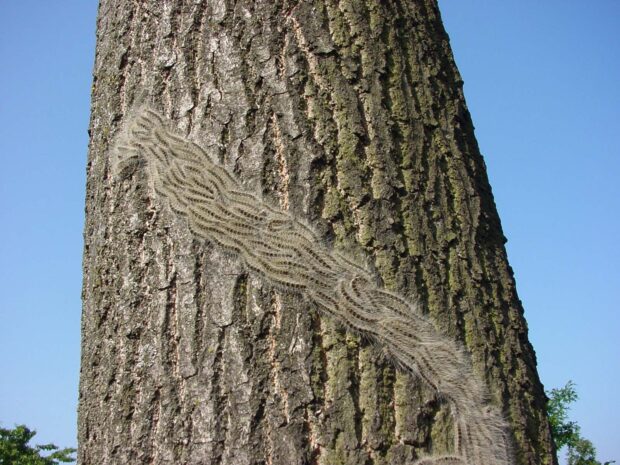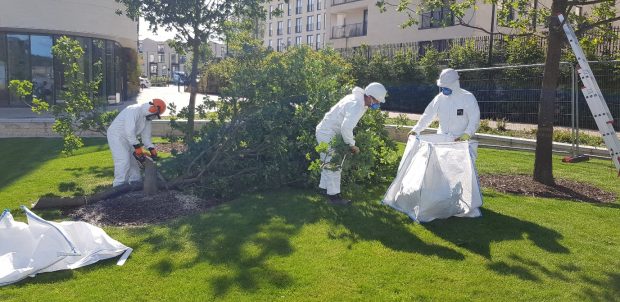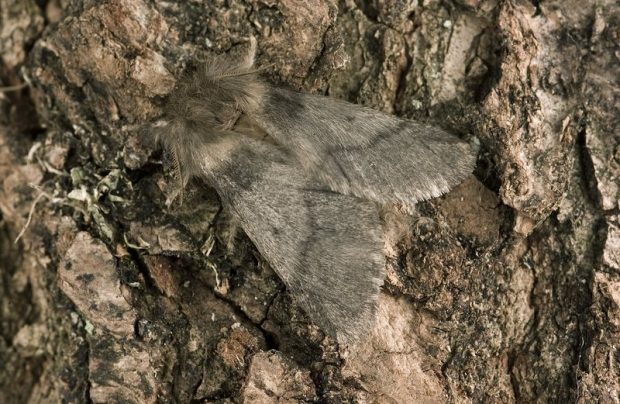
While carrying out routine targeted inspections of oak trees in June 2019, a Government plant health inspector noticed something amiss – recently planted trees imported from the Netherlands were infested with oak processionary moth (OPM) caterpillars.
OPM is an insect pest of oak, our most common broadleaved tree. The caterpillars feed on oak leaves and can increase a tree’s vulnerability to attack by other pests and diseases, as well as harsh environmental conditions.
OPM is established in most of Greater London and some surrounding counties, but thanks to a robust government programme and national measures, the rest of the UK is designated as a Protected Zone.
Professor Nicola Spence, Defra Chief Plant Health Officer, said:
As soon as we were notified of findings of oak processionary moth in the Protected Zone, we immediately began work to find the source and identify the potential scale of the problem. We notified our counterparts in Northern Ireland, Scotland and Wales to ensure a UK-wide response and swift eradication to prevent spread.
The Plant Health Service looked at oak tree imports into the country and have since traced over 2000 consignments of oak from the Netherlands, Germany and Belgium. To ensure vigilance, Government reached out to the trade including landscapers and nurseries, asking those who had planted or imported larger oaks from the continent to urgently check their trees.
Dr Anna Brown, Head of Tree Health & Contingency Planning, Forestry Commission, said:
Once a consignment of oak was identified, members of the UK Plant Health Service and their contractors, were deployed and began to look for symptoms of OPM.
We also reached out to Observatree, a network of over 200 specialist volunteers who undertake survey activities to assist with the spotting of tree pests and diseases.
It soon became apparent that there had been exceptional expansion of the OPM population in Europe, due to the hot weather experienced last year. In 2018, tighter restrictions on the import of oak trees into England were introduced by Government. In July 2019, emergency measures were brought in to strengthen this legislation, with Northern Ireland, Scotland and Wales following suit.
Thanks to a swift and coordinated response, oak processionary moth was intercepted at over 70 planting sites in the UK Protected Zone. All infested trees and material were rapidly destroyed to eradicate the pest.

Ongoing surveillance
Pheromone traps have been used to monitor for the presence of adult moths where OPM may have taken flight and will be used in the coming season in 2020.
The traps contain a mixture of chemicals that mimic female OPM sex pheromones, attracting male moths in the wider environment.
In London and surrounding counties where OPM is present, we will continue to work with local authorities and land managers to tackle OPM, with a programme of treatment and surveillance.

Next steps
The cases highlight the need for continued vigilance from industry and government to protect the UK’s trees.
Dr Anna Brown, Head of Tree Health & Contingency Planning, Forestry Commission, said:
Those of us involved in importing or trading plants must maintain our vigilance against exotic pests and diseases. There is a lot we can do such as only buying stock from reputable, responsible suppliers and regularly inspecting imported plants.
Inspect, inspect and inspect again – we can’t check imported plants too often for signs of trouble. Don’t presume that because your supplier found no evidence of a pest or disease that you won’t either. You might spot something that they have missed, this season or the next.
If you suspect OPM you should not attempt to destroy or move infested material yourself, as the nests and caterpillars can pose some risks to human health. You can report tree pests and diseases online using TreeAlert or by contacting your local plant health inspector.
For more on information symptoms, life cycles and import restrictions, visit www.forestresearch.gov.uk/opm.


